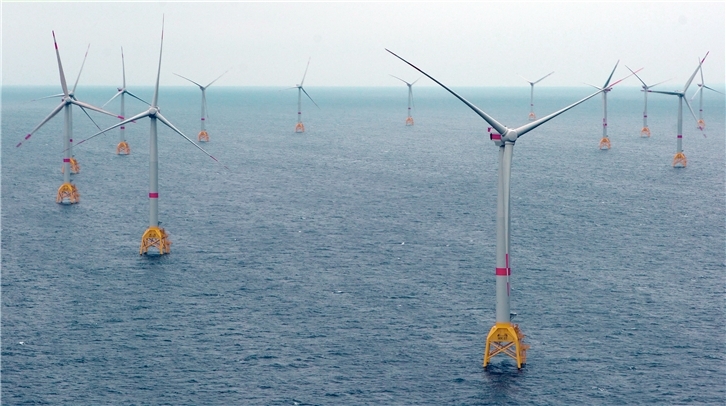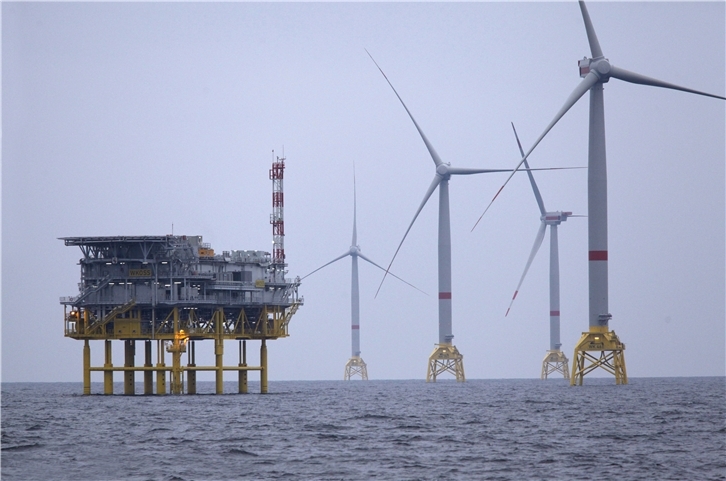News
2017-12-29 00:00:00.0Total investment in the project amounts to circa €1.4 million
Iberdrola’s Wikinger offshore wind farm connected to the grid in Germany
- The company has successfully connected the 350-MW wind farm to the national power grid. The facility will supply renewable energy to approximately 350,000 homes
Iberdrola has connected its Wikinger offshore wind farm to the German power grid. The facility was built over the last 18 months in the Baltic Sea.
By reaching this milestone, Wikinger adds 350 megawatts (MW) capacity to the system and will supply renewable energy to 350,000 homes, representing more than 20% of the power used by the state of Mecklenburg-West Pomerania, in whose waters the project is located.
Iberdrola has met the demanding time frame set to build Wikinger thanks to the company’s extraordinary multidisciplinary and multinational team, fully engaged with the project, and the collaboration of all its suppliers and contractors. In the process, it overcame all kinds of technology challenges and complications caused by the Baltic Sea's extreme weather conditions during autumn and winter.
- 280 piles were driven into the sea bed to hold the foundations
- The offshore substation jacket was installed
- The Andalucía offshore substation was installed and commissioned
- The underwater cables connecting with Lubmin onshore substation were installed and commissioned in coordination with 50Hertz
- More than 80 kilometres (50 miles) of underwater array cables were run and commissioned
- The 70 jackets and wind turbines were installed and commissioned
A flagship project for Iberdrola
- Major investment push in renewable energies
- Commitment to emissions reduction
- Technological innovation
- International growth
- Opening new businesses and markets to its suppliers
- Significant pull effect: over 2,000 construction and manufacturing jobs were created at the port of Mukran and the plants where the equipment was fabricated, in Germany, Denmark and Spain.
To build the project, 280 piles delivered by Windar were driven into the sea bed, each one measuring 131-foot long and eight-foot diameter and weighing 150 tonnes. Seventy 620-tonne foundations were manufactured by Bladt in Lindo (Denmark) and by Navantia at Fene shipyard (Spain).
The AD-5-135 turbines, with 5 MW unit capacity, were fabricated by Adwen at its plants in Bremerhaven and Stade (Germany). They are the largest wind turbines installed by the company thus far, comprising a 222-tonne nacelle, a rotor that is 135 m (442 feet) in diameter with 77.5 m-long (254 feet) blades, and a 75 m-high (246 feet) tower.
Also, one of the key infrastructures at Wikinger is the offshore substation, named Andalusia, which will be used jointly by Iberdrola and 50Hertz, one of the German system operators. It was manufactured by Navantia at its Puerto Real (Spain) facilities, weighs 8,500 tonnes – more that the Eiffel tower and the Statue of Liberty combined – and it’s the wind farm’s energy core.
Commitment to offshore wind power
Offshore wind power, a business in which the company is investing heavily, is one of the key drivers of Iberdrola’s growth, mainly in the United Kingdom, Germany, and France.
The group already has an operational farm in the Irish Sea called West of Duddon Sands (WoDS) – jointly owned with Orsted – which was commissioned in 2014. The 389-MW facility generates enough electricity to supply approximately 300,000 British homes. Total project investment exceeded £1.6 billion.
Iberdrola is developing what will be one of the largest offshore wind farms in the world when it begins operations in 2020: the 714-MW East Anglia One (EAO) in British waters in the North Sea. The company has already awarded 90% of the supply contracts. The wind farm will require an investment of £2.5 billion and will produce enough clean energy to supply more than 500,000 English homes.
The size of EAO will be unprecedented in the renewable energy industry: covering an area of over 298 km2 (185 square miles) or the size of 30,000 football pitches; the export cable will be approximately 85 kilometres (53 miles) long and the blades of the wind turbines around 75 metres (246 metres) long. Each wind turbine foundation will weigh around 747 tonnes, or six aircraft.
Iberdrola is also developing the Saint-Brieuc project, 20 kilometres (12 miles) off the coast of Brittany in northern France, about 100 km (62 miles) from the city of Rennes. The offshore wind farm will comprise sixty-two 8-MW capacity Siemens-Gamesa turbines.
All of these investments underscore Iberdrola’s commitment to the development of renewable energy, essential for the transition towards carbon-free energy and the fight against climate change. Iberdrola’s stock of renewable power at 30 September 2017 amounts to nearly 29,000 MW and two thirds of the Group's total generating capacity is entirely emissions free.








